A Study on the Power Reserve of Distributed Generators Based on Power Sensitivity Analysis in a Large-Scale Power System
Abstract
1. Introduction
2. VMS Power Flow Analysis
2.1. Concept of the Proposed Power System Operation with VMS Droop Control
2.2. VMS Power Flow Analysis
3. Calculating the Power Reserve for Each CBG
4. Simulation Results
4.1. The Load Changes in the Representative Bus
4.2. Case Study 1: Results Based on the CBG Control Mode Differences
4.3. Case Study 2: Results of the Difference in the Amount of Power Reserves of CBGs
5. Conclusions
Author Contributions
Funding
Conflicts of Interest
References
- The 8th Basic Plan for Long-Term Electricity Supply and Demand (2017–2031); Korea Ministry of Trade, Industry, and Energy: Sejong, Korea, 2017.
- Third Energy Master Plan; Korea Ministry of Trade, Industry, and Energy: Sejong, Korea, 2019.
- Kim, J.-H.; Kim, S.-Y.; Yoo, S.-H. Public acceptance of the “Renewable Energy 3020 Plan”: Evidence from a contingent valuation study in South Korea. Sustainability 2020, 12, 3151. [Google Scholar] [CrossRef]
- Chandraratne, C.; Ramasamy, T.N.; Logenthiran, T.; Panda, G. Adaptive Protection for Microgrid with Distributed Energy Resources. Electronics 2020, 9, 1959. [Google Scholar] [CrossRef]
- Leitner, S.; Yazdanian, M.; Mehrizi-Sani, A.; Muetze, A. Small-Signal Stability Analysis of an Inverter-Based Microgrid with Internal Model-Based Controllers. IEEE Trans. Smart Grid 2018, 9, 5393–5402. [Google Scholar] [CrossRef]
- Ali, H.; Magdy, G.; Li, B.; Shabib, G.; Elbaset, A.A.; Xu, D.; Mitani, Y. A New Frequency Control Strategy in an Islanded Microgrid Using Virtual Inertia Control-Based Coefficient Diagram Method. IEEE Access 2019, 7, 16979–16990. [Google Scholar] [CrossRef]
- Lin, C.; Wu, W.; Zhang, B.; Wang, B.; Zheng, W.; Li, Z. Decentralized Reactive Power Optimization Method for Transmission and Distribution Networks Accommodating Large-Scale DG Integration. IEEE Trans. Sustain. Energy 2017, 8, 363–373. [Google Scholar] [CrossRef]
- Zhong, C.; Zhou, Y.; Zhang, X.-P.; Yan, G. Flexible Power-Point-Tracking-Based Frequency Regulation Strategy for PV System. IET Renew. Power Gener. 2020, 14, 1797–1807. [Google Scholar] [CrossRef]
- Nanou, S.I.; Papakonstantinou, A.G.; Papathanassiou, S.A. A Generic Model of Two-Stage Grid-Connected PV Systems with Primary Frequency Response and Inertia Emulation. Electr. Power Syst. Res. 2015, 127, 186–196. [Google Scholar] [CrossRef]
- Yan, G.; Liang, S.; Jia, Q.; Cai, Y. Novel adapted de-loading control strategy for PV generation participating in grid frequency regulation. J. Eng. 2019, 16, 3383–3387. [Google Scholar] [CrossRef]
- Worku, M.Y.; Hassan, M.A.; Abido, M.A. Real Time-Based under Frequency Control and Energy Management of Microgrids. Electronics 2020, 9, 1487. [Google Scholar] [CrossRef]
- Kabsha, M.M.; Rather, Z.H. A New Control Scheme for Fast Frequency Support from HVDC Connected Offshore Wind Farm in Low-Inertia System. IEEE Trans. Sustain. Energy 2020, 11, 1829–1837. [Google Scholar] [CrossRef]
- Li, Y.; Xu, Z.; Meng, K. Optimal Power Sharing Control of Wind Turbines. IEEE Trans. Power Syst. 2017, 32, 824–825. [Google Scholar] [CrossRef]
- Kumar, S.; Singh, B. Seamless Operation and Control of Single-Phase Hybrid PV-BES-Utility Synchronized System. IEEE Trans. Ind. Appl. 2019, 55, 1072–1082. [Google Scholar] [CrossRef]
- Esmaili, A.; Novakovic, B.; Nasiri, A.; Abdel-Baqi, O. A Hybrid System of Li-Ion Capacitors and Flow Battery for Dynamic Wind Energy Support. IEEE Trans. Ind. Appl. 2013, 49, 1649–1657. [Google Scholar] [CrossRef]
- Yoo, Y.; Jang, G.; Jung, S. A Study on Sizing of Substation for PV with Optimized Operation of BESS. IEEE Access 2020, 8, 214577–214585. [Google Scholar] [CrossRef]
- Choi, D.; Park, J.-W.; Lee, S.H. Virtual Multi-Slack Droop Control of Stand-Alone Microgrid with High Renewable Penetration Based on Power Sensitivity Analysis. IEEE Trans. Power Syst. 2018, 33, 3408–3417. [Google Scholar] [CrossRef]
- Karimi, Y.; Oraee, H.; Guerrero, J.M. Decentralized method for load sharing and power management in a hybrid single/three phase-islanded microgrid consisting of hybrid source PV/battery units. IEEE Trans. Power Electron. 2017, 32, 6135–6144. [Google Scholar] [CrossRef]

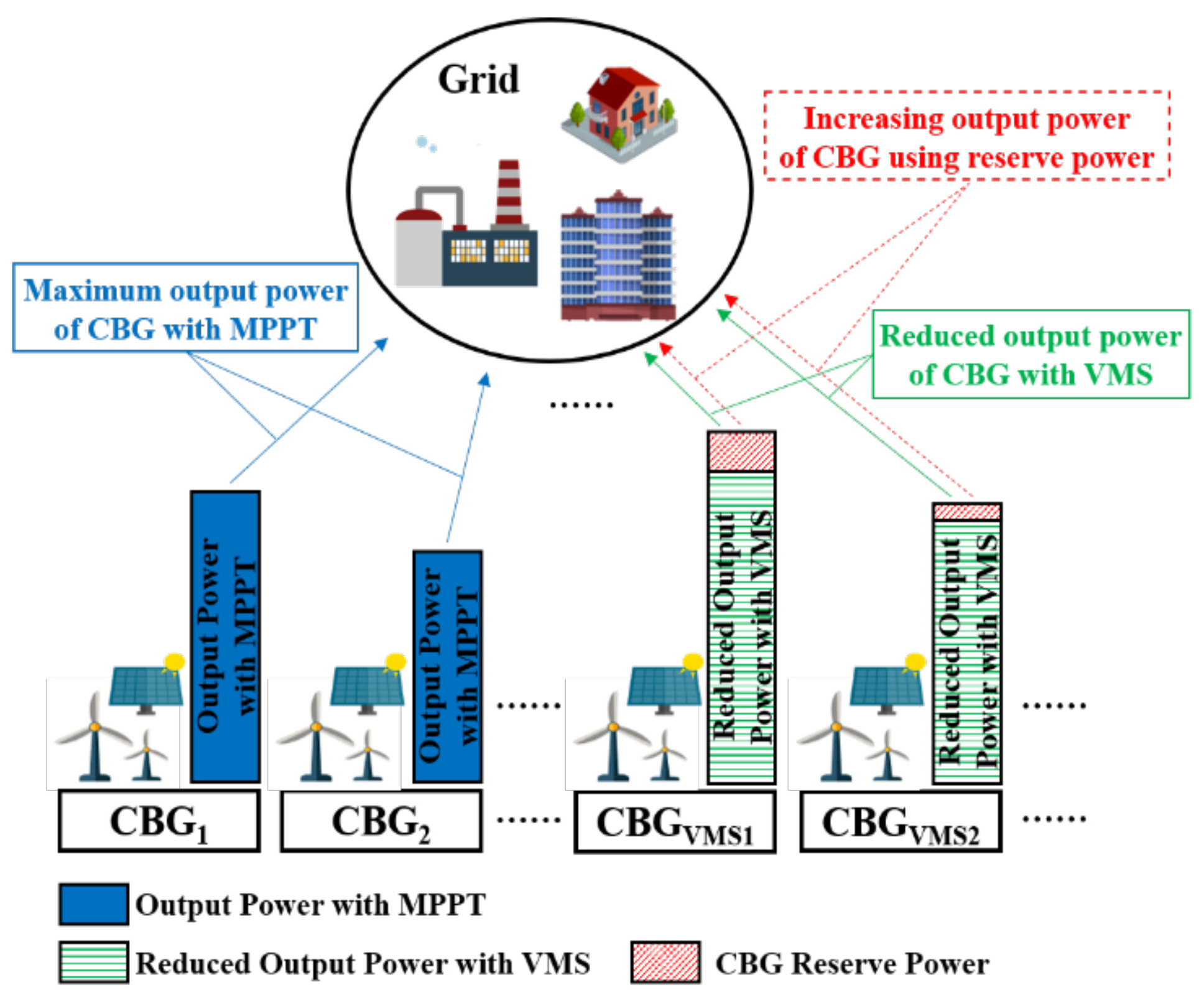
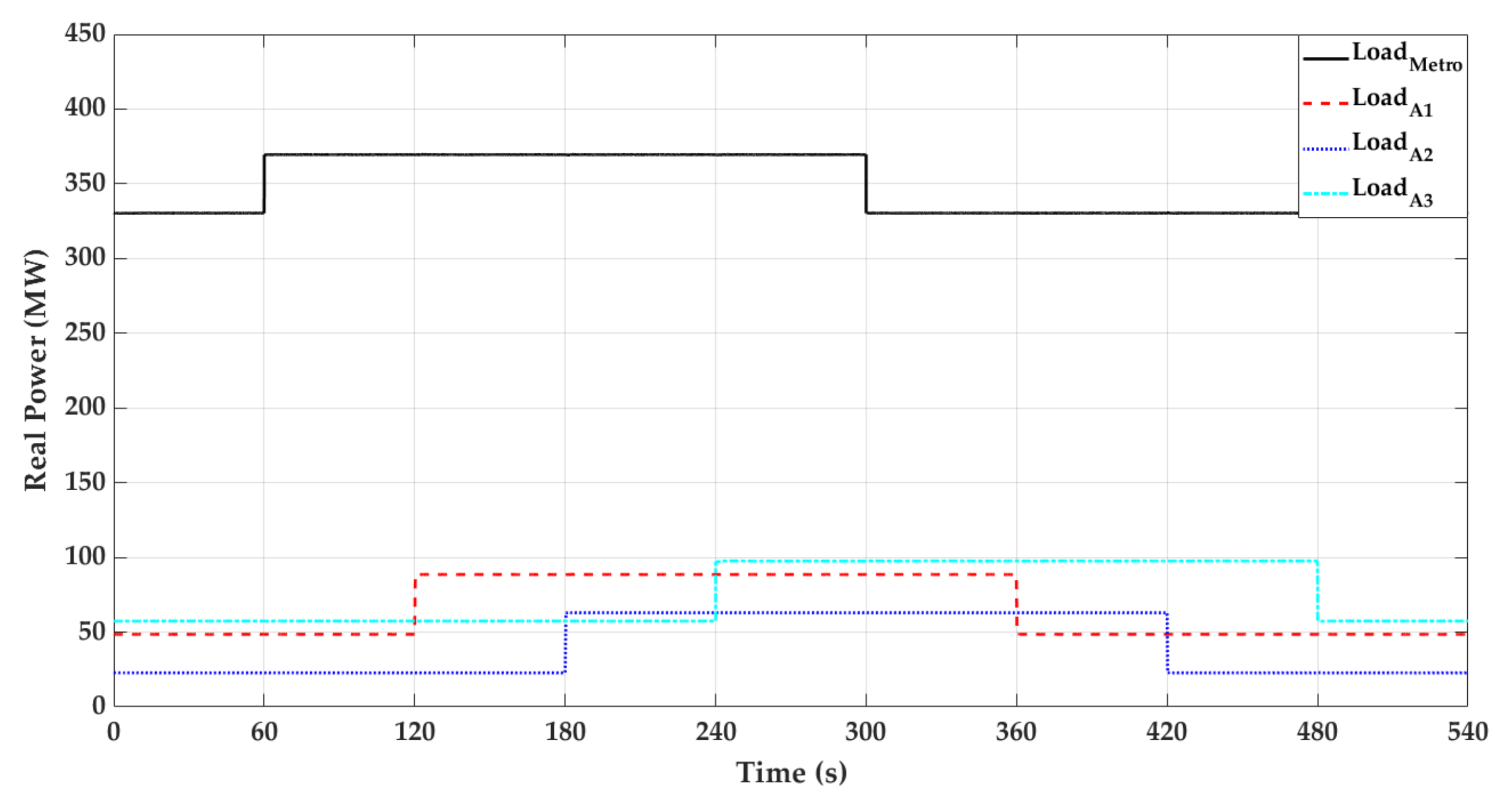

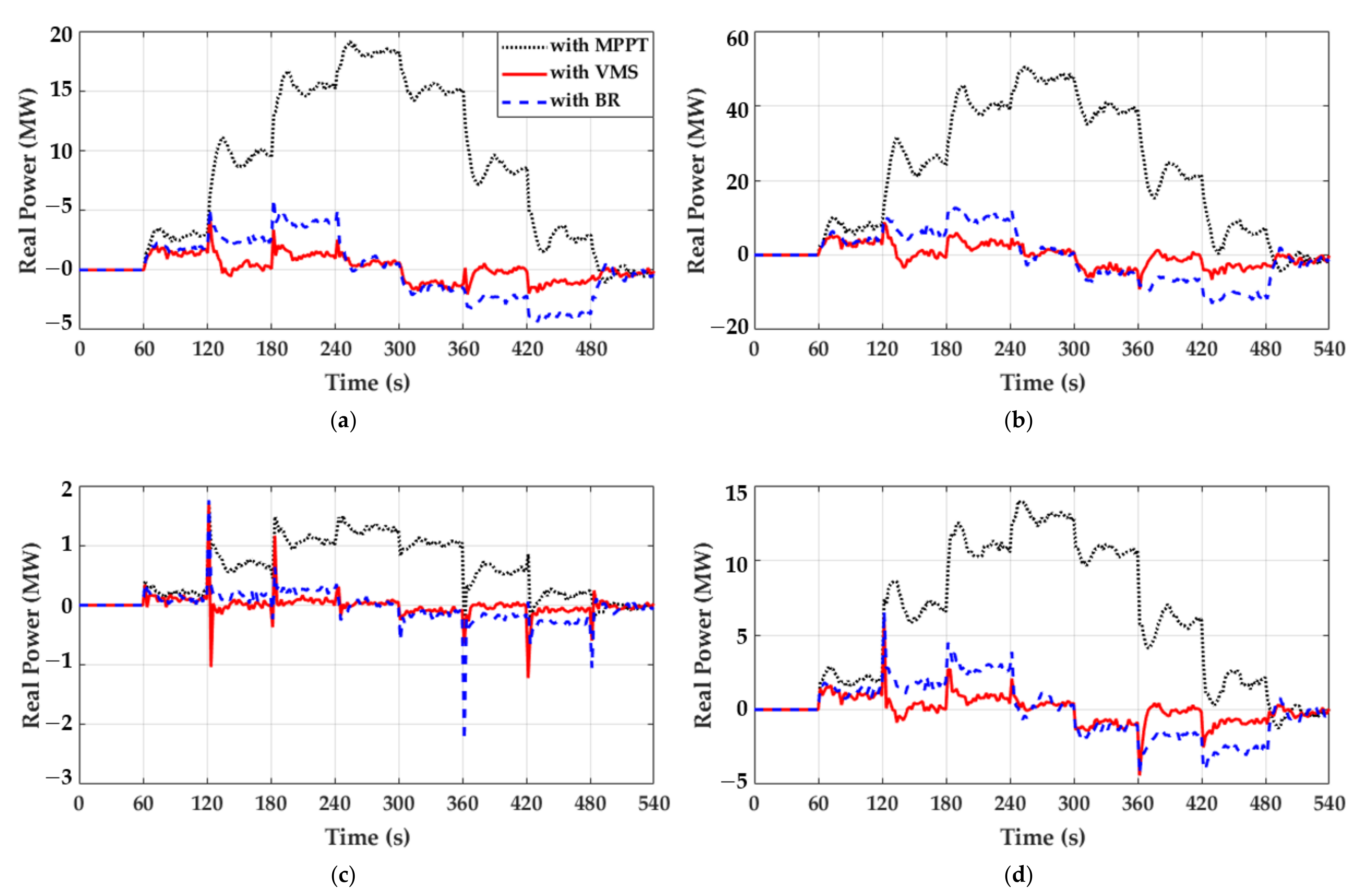
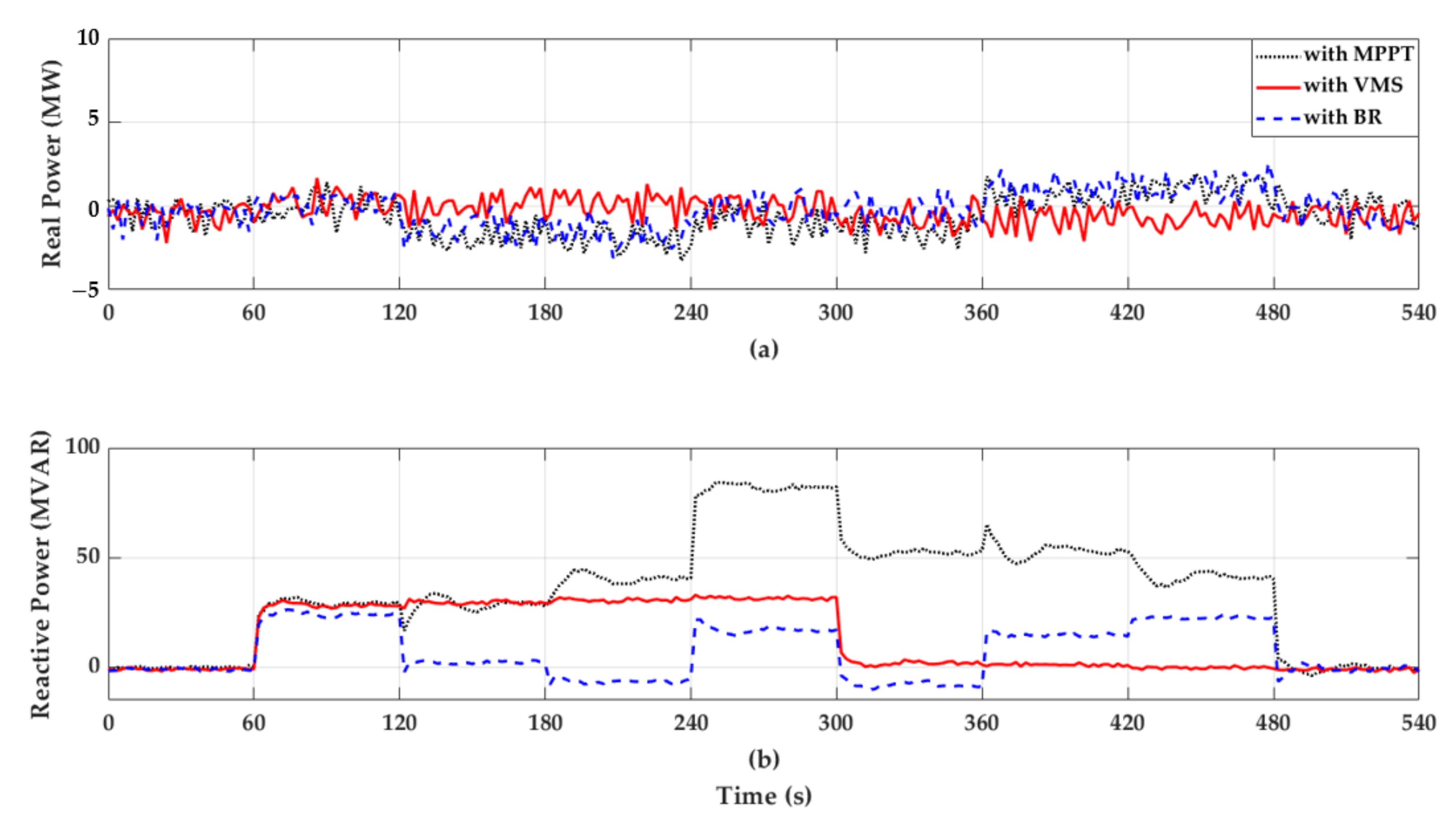

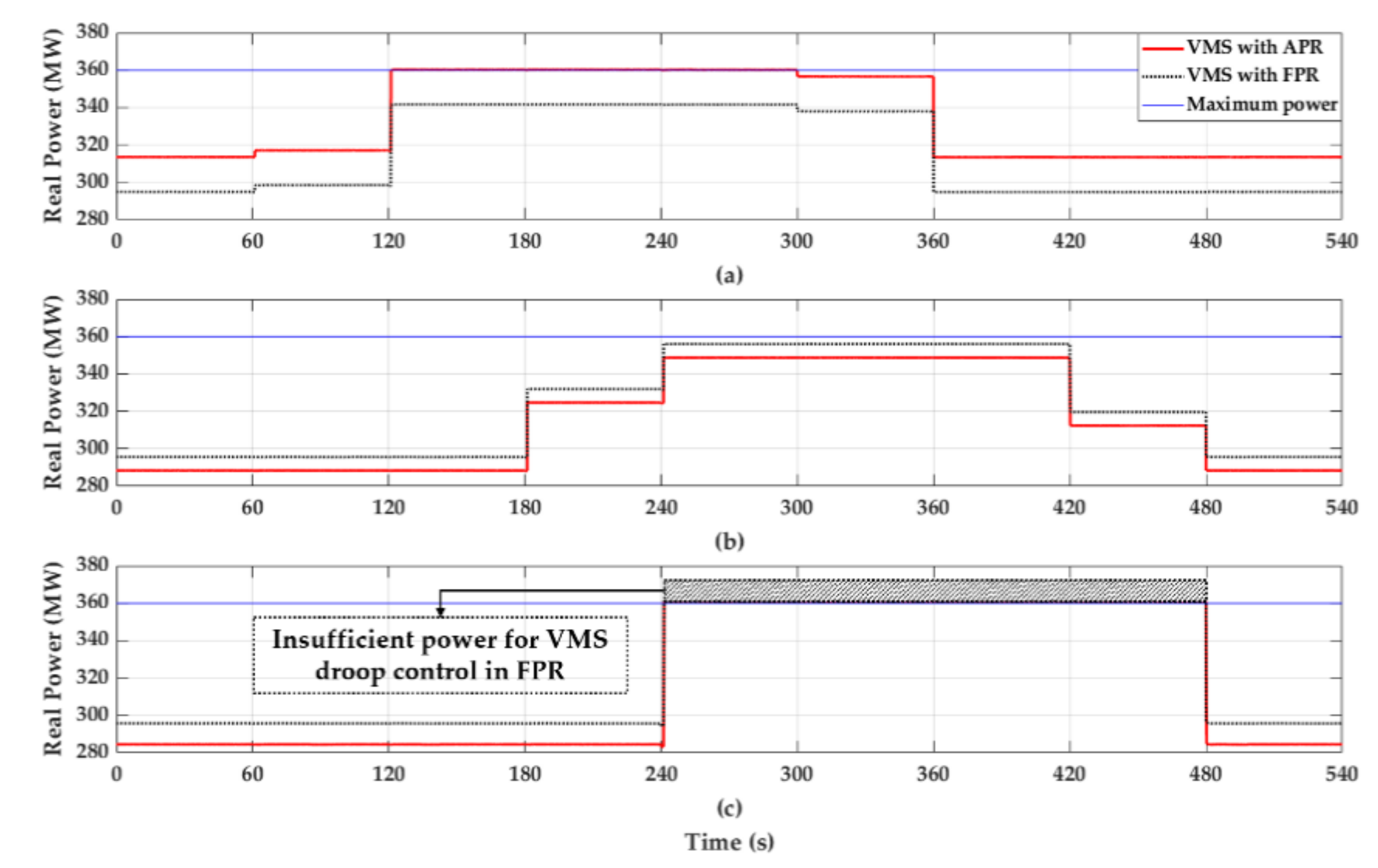

| Year | PV | Wind | Hydro | Offshore | Bio | Wastes | Byproduct Gas | Fuel Cell | IGCC | Total |
|---|---|---|---|---|---|---|---|---|---|---|
| 2017 | 5030 | 1174 | 1795 | 255 | 725 | 323 | 1377 | 291 | 346 | 11,316 |
| 2020 | 9330 | 2724 | 1850 | 255 | 1025 | 323 | 1377 | 531 | 346 | 17,761 |
| 2025 | 19,530 | 8474 | 1960 | 255 | 1405 | 323 | 1377 | 691 | 746 | 34,761 |
| 2030 | 33,530 | 17,674 | 2105 | 255 | 1705 | 323 | 1377 | 746 | 746 | 58,461 |
| 8.7 | 9 | 50.1 | 50.1 | 309.9 | |
| 12.6 | 50 | 36.3 | 62.6 | 297.4 | |
| 7.2 | 69.3 | 39 | 76.5 | 283.5 |
Publisher’s Note: MDPI stays neutral with regard to jurisdictional claims in published maps and institutional affiliations. |
© 2021 by the authors. Licensee MDPI, Basel, Switzerland. This article is an open access article distributed under the terms and conditions of the Creative Commons Attribution (CC BY) license (http://creativecommons.org/licenses/by/4.0/).
Share and Cite
Kim, D.; Park, J.-W.; Lee, S.H. A Study on the Power Reserve of Distributed Generators Based on Power Sensitivity Analysis in a Large-Scale Power System. Electronics 2021, 10, 769. https://doi.org/10.3390/electronics10070769
Kim D, Park J-W, Lee SH. A Study on the Power Reserve of Distributed Generators Based on Power Sensitivity Analysis in a Large-Scale Power System. Electronics. 2021; 10(7):769. https://doi.org/10.3390/electronics10070769
Chicago/Turabian StyleKim, Dongmin, Jung-Wook Park, and Soo Hyoung Lee. 2021. "A Study on the Power Reserve of Distributed Generators Based on Power Sensitivity Analysis in a Large-Scale Power System" Electronics 10, no. 7: 769. https://doi.org/10.3390/electronics10070769
APA StyleKim, D., Park, J.-W., & Lee, S. H. (2021). A Study on the Power Reserve of Distributed Generators Based on Power Sensitivity Analysis in a Large-Scale Power System. Electronics, 10(7), 769. https://doi.org/10.3390/electronics10070769








